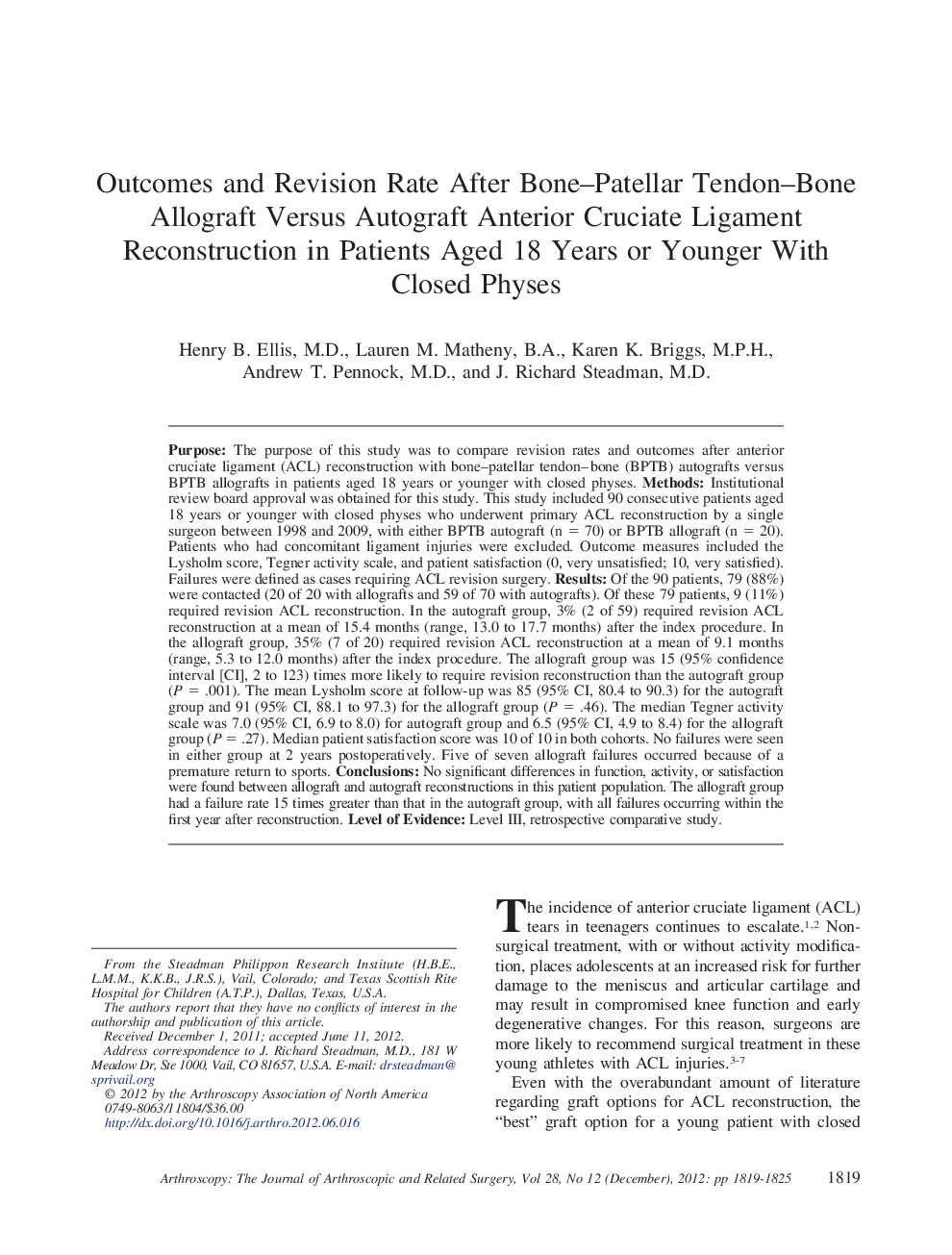| Article ID | Journal | Published Year | Pages | File Type |
|---|---|---|---|---|
| 4044037 | Arthroscopy: The Journal of Arthroscopic & Related Surgery | 2012 | 7 Pages |
PurposeThe purpose of this study was to compare revision rates and outcomes after anterior cruciate ligament (ACL) reconstruction with bone–patellar tendon–bone (BPTB) autografts versus BPTB allografts in patients aged 18 years or younger with closed physes.MethodsInstitutional review board approval was obtained for this study. This study included 90 consecutive patients aged 18 years or younger with closed physes who underwent primary ACL reconstruction by a single surgeon between 1998 and 2009, with either BPTB autograft (n = 70) or BPTB allograft (n = 20). Patients who had concomitant ligament injuries were excluded. Outcome measures included the Lysholm score, Tegner activity scale, and patient satisfaction (0, very unsatisfied; 10, very satisfied). Failures were defined as cases requiring ACL revision surgery.ResultsOf the 90 patients, 79 (88%) were contacted (20 of 20 with allografts and 59 of 70 with autografts). Of these 79 patients, 9 (11%) required revision ACL reconstruction. In the autograft group, 3% (2 of 59) required revision ACL reconstruction at a mean of 15.4 months (range, 13.0 to 17.7 months) after the index procedure. In the allograft group, 35% (7 of 20) required revision ACL reconstruction at a mean of 9.1 months (range, 5.3 to 12.0 months) after the index procedure. The allograft group was 15 (95% confidence interval [CI], 2 to 123) times more likely to require revision reconstruction than the autograft group (P = .001). The mean Lysholm score at follow-up was 85 (95% CI, 80.4 to 90.3) for the autograft group and 91 (95% CI, 88.1 to 97.3) for the allograft group (P = .46). The median Tegner activity scale was 7.0 (95% CI, 6.9 to 8.0) for autograft group and 6.5 (95% CI, 4.9 to 8.4) for the allograft group (P = .27). Median patient satisfaction score was 10 of 10 in both cohorts. No failures were seen in either group at 2 years postoperatively. Five of seven allograft failures occurred because of a premature return to sports.ConclusionsNo significant differences in function, activity, or satisfaction were found between allograft and autograft reconstructions in this patient population. The allograft group had a failure rate 15 times greater than that in the autograft group, with all failures occurring within the first year after reconstruction.Level of EvidenceLevel III, retrospective comparative study.
